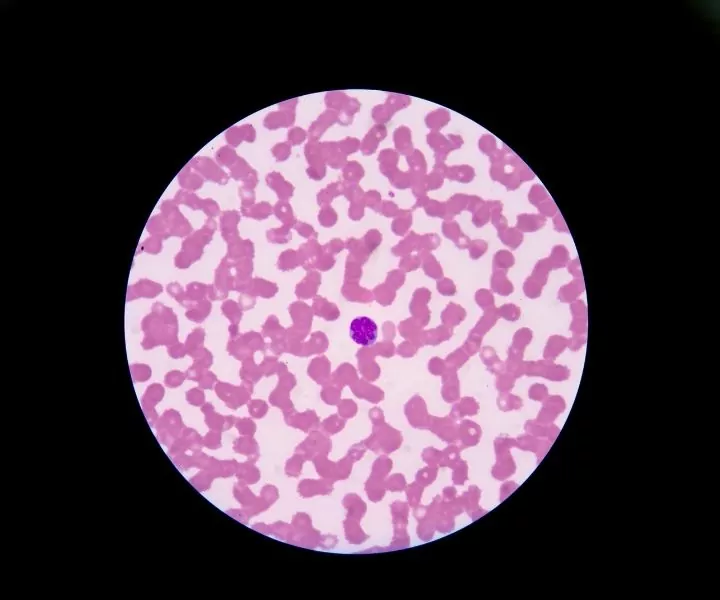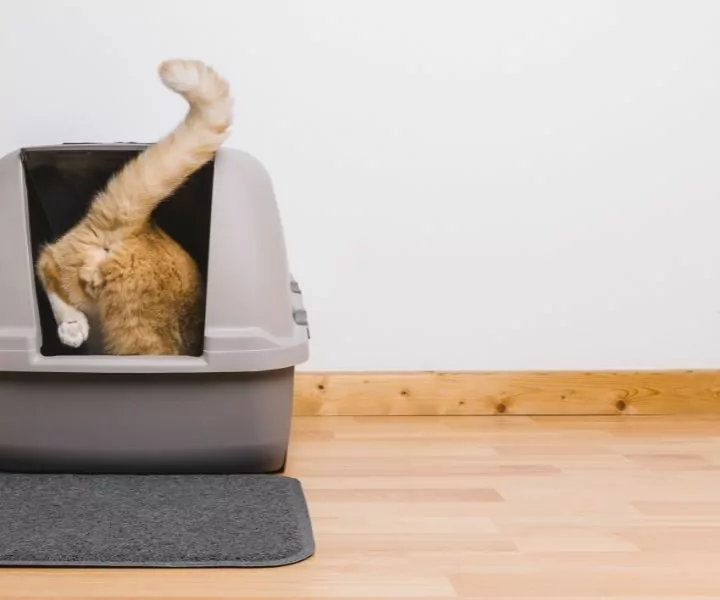What Happens When Your Cat’s Routine Trip to The Litter Box Isn’t as Easy as 1…2…Pee?
Cats and cat UTI symptoms…Cats are usually discreet about their bathroom habits, so when their urination starts to draw your attention, they could possibly be exhibiting cat UTI symptoms.

UTI is the abbreviation for Urinary Tract Infection. The urinary tract consists of two kidneys, two ureters, the bladder, and the urethra. These structures can be individually or collectively affected by a UTI. In addition, each structure has its own unique function in the urinary tract and may have a knock-on effect if affected by a disease process.
Cat UTI Symptoms and Signs
UTIs in cats can occur at various ages, but we most commonly encounter them between the ages of one to five years or in cats older than ten years. Identifying cat UTI symptoms can be easy if you know what to look out for, so here are some of the most common signs encountered:
- Discolored urine – blood in the urine can be red, pink, or brown.
- Abnormal cries of pain or discomfort while urinating.
- Passing small amounts of urine as droplets only or in coin-sized puddles.
- Frequent and/or prolonged attempts to urinate.
- Overgrooming or biting of the genital area.
- Urinating in strange places such as the sink, bathtub, or directly in front of you.
- Difficulty urinating is seen as straining or misconstrued as constipation.
- Behavioral changes such as increased irritability, hiding, or lethargy.
Are the UTI Symptoms for Female and Male Cats Different?
Both male and female cats are at risk of developing UTIs, but there is a higher risk of urethral obstruction in male cats. This is due to the anatomical difference in a male cat’s penis, which has a long, narrow urethra, thus predisposing it to become blocked.
A blocked bladder is a term used when no urine passes through the urethra, which is a veterinary emergency.
Neutered male cats seem to be at a higher risk for blocking.
What Are The Causes of UTI in Felines?
Urinary tract problems in cats can have single or multifactorial causes, but specific criteria can predispose them to develop UTIs.
Obesity
Overweight cats have higher risk profiles for UTIs due to lack of exercise, possible underlying diabetes, and increased risk of ascending bacterial infection due to difficulties with grooming.
Litter box habits
Cats who use indoor litter boxes or who have restricted outdoor access will sometimes refuse to urinate in dirty litter trays or a litter medium they disapprove of.
Multi-cat households
Cats are very territorial and private when it comes to elimination behavior, so if there are not enough litter trays available, it can lead to cat fights or intimidation which fosters urination avoidance behavior.
Emotional or environmental stressors
Cats are very sensitive animals, and abrupt changes in routines, visitors, the addition of new pets, intimidating feral cats, or family disputes can cause cats to stress and hide. This interferes with their routine litter box visits.
Underlying disease
Conditions that affect the immune systems such as Feline Immunodeficiency Virus (FIV), endocrine diseases like hyperthyroidism or diabetes, and possible bladder cancer, bladder innervation abnormalities, spinal injuries, or an underdeveloped bladder sphincter can compromise bladder health.
Leading Causes of Cat UTIs
Infectious agents
Bacterial infections usually originate from fecal contamination, often seen in long hair breeds due to severe matting. The matting hosts various bacteria species, especially E.coli, which then causes ascending bacterial infections in the bladder.
Other infectious agents such as fungi, parasites, or possibly even viruses can also cause signs of UTIs. Still, bacterial infections are the most common infectious causes we see in clinical practice.
Urolithiasis (urinary stones)
Urinary stones are composites of minerals that either maintain a crystal form in the urine or conglomerates into physical stones, ranging from small flakes to actual stones.
These uroliths cause significant irritation and may lead to significant discomfort when moving around in the urinary tract. They can be formed in the kidneys or travel down into the bladder, leading to inflammation of the bladder lining or even blockages.
The type of uroliths can be roughly identified by microscopic exam of a urine sample, but the most accurate identification of a stone is ideally made in a lab. This is because the lab looks at the mineral composition of the stones and their layers instead of just the crystals found in urine sediments.
An excellent resource for urolith research is the Minnesota Urolith Center. They make use of quantitative mineral analysis utilizing Optical Crystallography and Infrared Spectroscopy (ATR and FTIR) to identify and advise treatment options for detected uroliths accurately.
The most commonly seen uroliths are calcium oxalate and struvite (magnesium ammonium phosphate).
Feline Lower Urinary Tract Disease
Feline Lower Urinary Tract Disease (FLUTD) is a condition that sometimes goes by a few different names. These names include Feline Idiopathic Cystitis (FIC) or Feline Urologic Syndrome (FUS).
The cause of FLUTD is often difficult to determine as the symptoms of various conditions are often similar. Therefore, a thorough clinical history and physical examination, and several diagnostic tests are needed to explore the etiology of the UTI. Unfortunately, cats can develop FLUTD without any obvious underlying cause.
Environmental and social stressors in a household are often missed in cats, and therefore it is very important to objectively observe your pet and their routine. Internal or external stressors may include:
- Inadequate territory – Cats are territorial creatures, and they need to feel safe and secure in their designated spaces. Territorial disputes can be as subtle as a glare or a full-blown fight. Cats are sensitive by nature and need their own space without being intimidated by other cats.
- Resource competition – multi-cat households can sometimes make cats feel like they are competing for food, water, clean litter box space, recreational/sleeping areas, or quality time with their owner.
- Building, remodeling, or loud noises/events can also be big stress triggers.
- Household changes – visitors, family members moving in or moving away, or the addition or loss of a pet can cause distress. Cats are very sentient and can sense stress in their owners and can then also become anxious.
Urethral blockage
A urethral blockage is a life-threatening emergency. Your cat can experience a blockage from either a urolith or from a urethral plug. A urethral plug is composed of soft material containing inflammatory or red blood cells and a mucus-like protein.
The high viscosity of the cells and proteins makes it more likely to build up in the narrow urethra and create a plug, thereby blocking urine outflow.
The reasons why a urethral blockage is life-threatening:
- The kidneys need to remove metabolites from normal processes through urine, and if the urine builds up, the metabolites become reabsorbed into the bloodstream.
- Fluid and electrolyte imbalances then result in dangerous levels of potassium which can cause heart failure.
- The bladder can potentially rupture.
Cat UTI Diagnosis
If your cat begins to show the listed UTI symptoms – it is best to take them to your veterinarian.
At the clinic, a detailed clinical history will be needed from a primary caregiver. An in-depth clinical exam, as well as the following lab tests, may be performed:
- Blood smear

- Urinalysis – urine can be collected free flow or through cystocentesis to check for uroliths, protein, red blood cells, or glucose. The specific gravity is also used to determine urine concentration.
- Blood tests – kidney values, blood glucose, and protein values- are screened in suspected kidney insufficiency or diabetes cases. In addition, thyroid hormone values will be checked if Hyperthyroidism is suspected, especially in older cats.
- Ultrasound – the integrity, shape, and contents of the kidney/bladder wall and urine respectively will be examined if ultrasound is indicated
- X-rays – can help identify larger uroliths in the urinary tract
What is the Difference Between UTI and FLUTD in Cats?
UTI is the term used to describe the inflammation or infection of the entire urinary tract, but FLUTD (Feline Lower Urinary Tract Disease) is a term used to describe a group of disorders or diseases that affects the lower urinary tract specifically.
Cat UTI Treatment
The treatment for a UTI will depend on the diagnosis
Infectious agents
An antibiotic may be prescribed for bacterial infections – good practice recommends a urine culture and sensitivity test to define the appropriate cat antibiotic. An anti-inflammatory may also be given if your cat has a fever or is very painful.
Urolithiasis (urinary stones) or Urethral obstruction
Prescription diets can alter the pH in the urine and aid in the dissolution of stones in the urinary tract. It is essential to keep your cat on a prescription diet as it helps prevent recurrence and contains other nutritional additives that help with stress and aid in bladder health.
In the case of a blocked cat, they may be hospitalized, stabilized, sedated, and catheterized to remove the blockage. Your cat may need to stay in the hospital for several days on fluid therapy and with an indwelling catheter to ensure they do not block again and that the metabolic imbalances are corrected. Treatment will depend on the cause and the severity of the blockage.
How Can I Prevent my Cat From Getting a UTI?
A few pointers to keep in mind if your pet has suffered from UTIs or has recurrent bouts of FLUTD are as follows:
Stress
- Try to minimize stressors and be cognizant of your cat’s behavior on a daily basis.
- Monitor cat interactions and ensure there is no resource competition, intimidation, or fighting.
- Introduce changes or new pets gradually.
Litter box etiquette

- Clean and sanitize litter boxes daily.
- Ensure your cat approves of the litter you buy, and if you’d like to change it, do so gradually and monitor if your cat approves the new litter medium.
- At least one more litter box than the total number of cats in the household – placed in secluded areas of the home.
Nutrition
- Provide clean, fresh water at all times and possibly even consider a water fountain for fussy cats
- Provide a good quality diet for your cat, including some wet food, and discuss a prescription diet with your vet if indicated.
Health
- Keeping your cat healthy involves monitoring their weight, regular exercise, and offering recreational spaces like catios for environmental enrichment.
- Biannual visits to your vet to check up on your cat’s general health can lead to early detection and prevention of UTI and FLUTD.
The Final Say
In the case of UTI or FLUTD, the prevention of future episodes is critical to avoid the escalation of subtle symptoms into life-threatening conditions. Cats who are predisposed to UTI could be at risk chronically and therefore require close monitoring.
